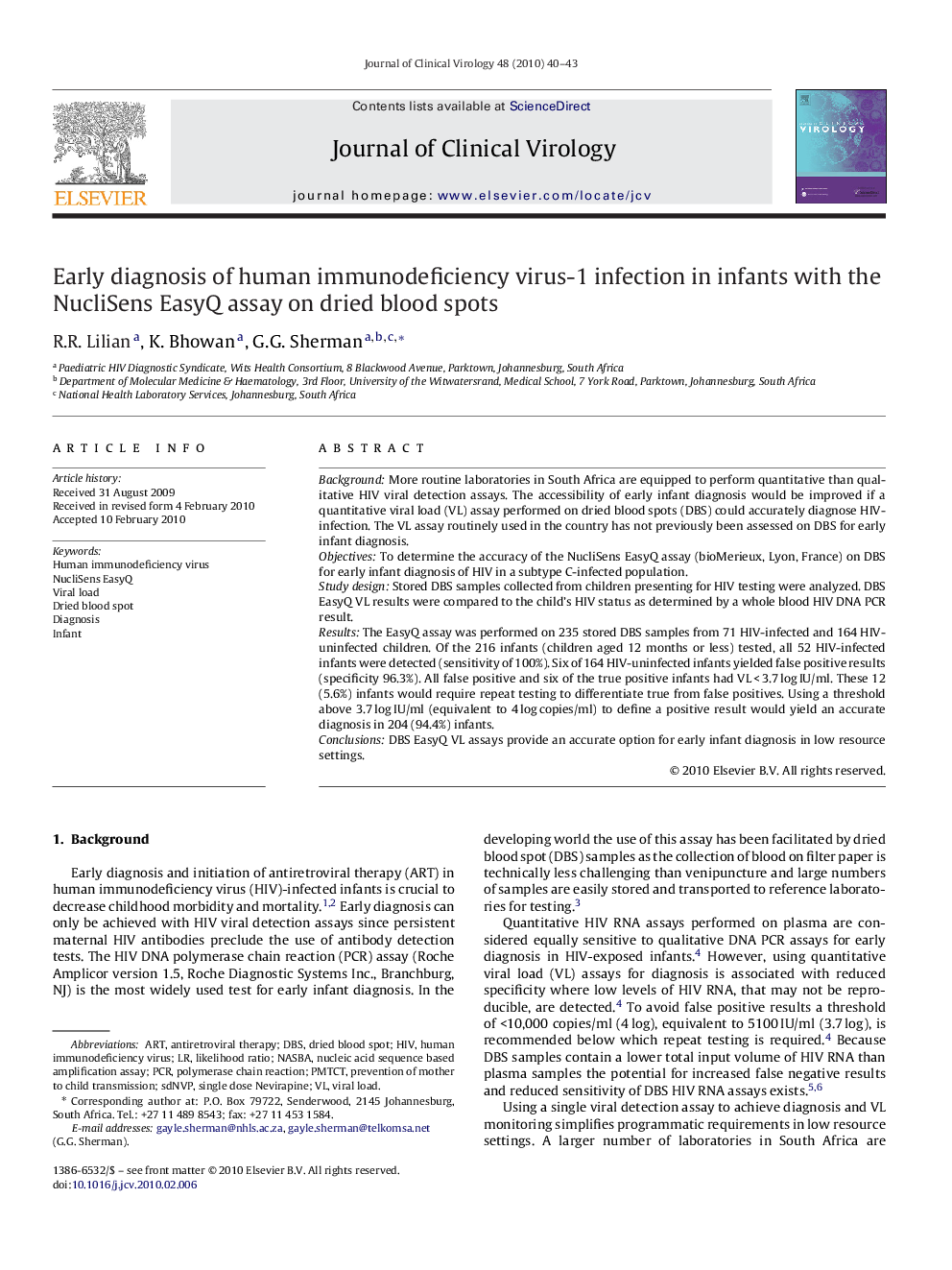| Article ID | Journal | Published Year | Pages | File Type |
|---|---|---|---|---|
| 3369545 | Journal of Clinical Virology | 2010 | 4 Pages |
BackgroundMore routine laboratories in South Africa are equipped to perform quantitative than qualitative HIV viral detection assays. The accessibility of early infant diagnosis would be improved if a quantitative viral load (VL) assay performed on dried blood spots (DBS) could accurately diagnose HIV-infection. The VL assay routinely used in the country has not previously been assessed on DBS for early infant diagnosis.ObjectivesTo determine the accuracy of the NucliSens EasyQ assay (bioMerieux, Lyon, France) on DBS for early infant diagnosis of HIV in a subtype C-infected population.Study designStored DBS samples collected from children presenting for HIV testing were analyzed. DBS EasyQ VL results were compared to the child's HIV status as determined by a whole blood HIV DNA PCR result.ResultsThe EasyQ assay was performed on 235 stored DBS samples from 71 HIV-infected and 164 HIV-uninfected children. Of the 216 infants (children aged 12 months or less) tested, all 52 HIV-infected infants were detected (sensitivity of 100%). Six of 164 HIV-uninfected infants yielded false positive results (specificity 96.3%). All false positive and six of the true positive infants had VL < 3.7 log IU/ml. These 12 (5.6%) infants would require repeat testing to differentiate true from false positives. Using a threshold above 3.7 log IU/ml (equivalent to 4 log copies/ml) to define a positive result would yield an accurate diagnosis in 204 (94.4%) infants.ConclusionsDBS EasyQ VL assays provide an accurate option for early infant diagnosis in low resource settings.
